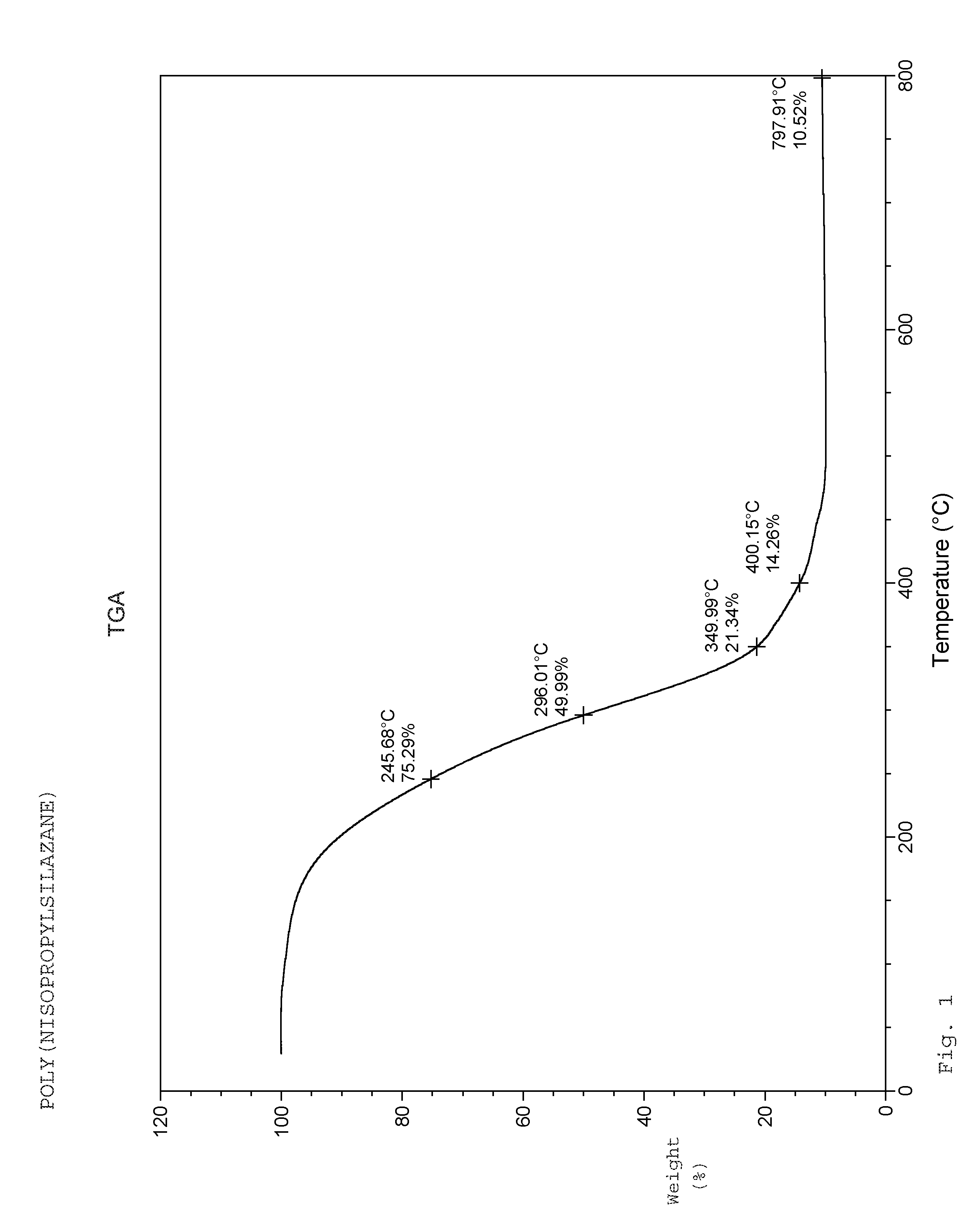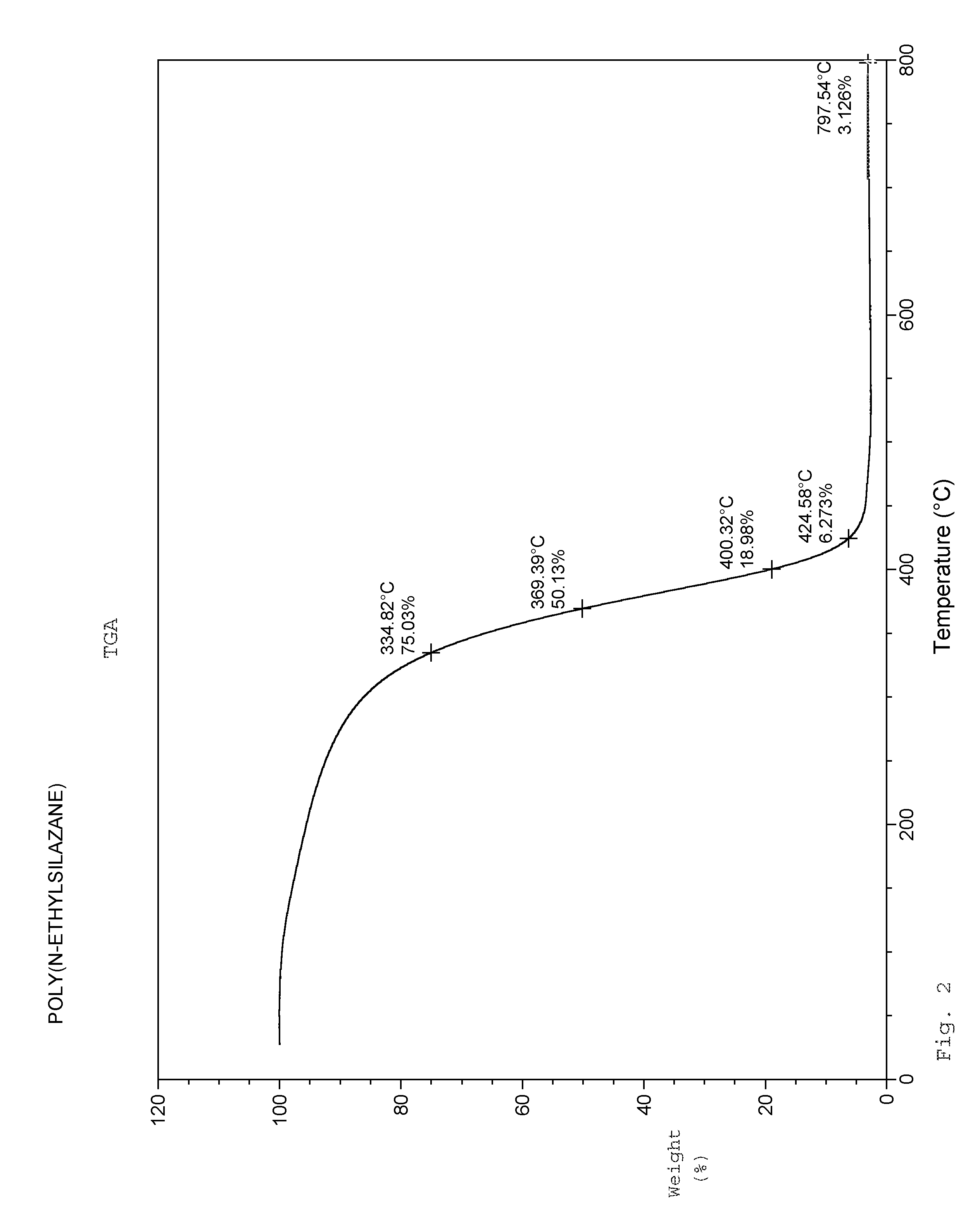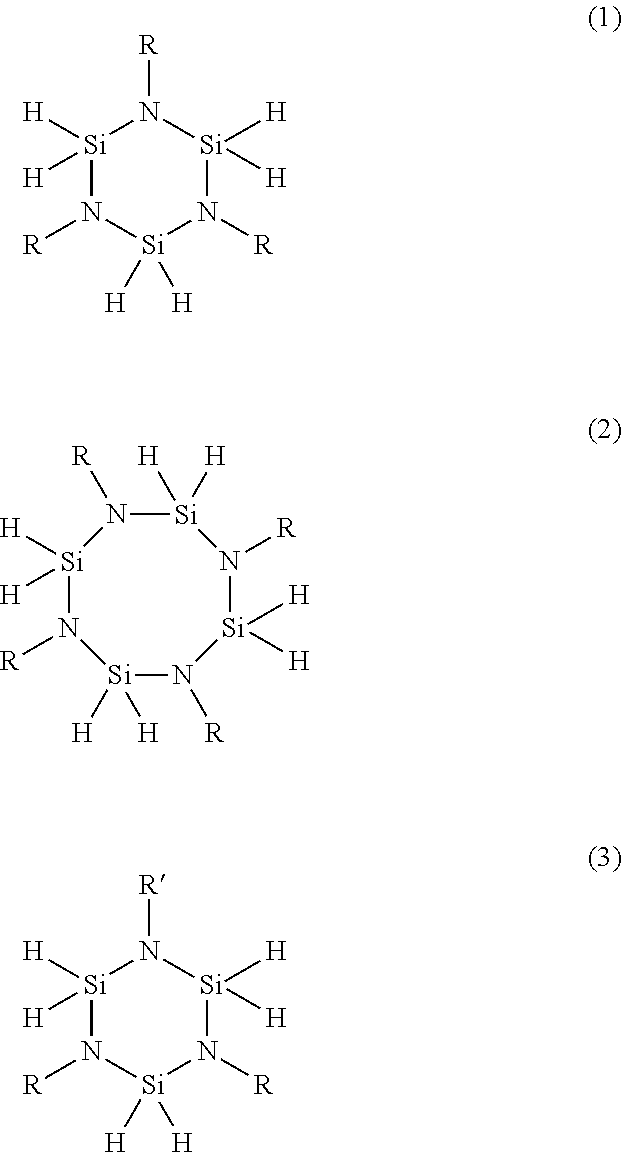N-alkyl substituted cyclic and oligomeric perhydridosilazanes, methods of preparation thereof, and silicon nitride films formed therefrom
a technology of which is applied in the field of n-alkyl substituted cyclic and oligomeric perhydridosilazanes, methods of preparation thereof, and silicon nitride films formed therefrom. it can solve the problems of significant tool reliability problems, limiting the quality of the resulting sin thin film, and requiring stringent safety precautions
- Summary
- Abstract
- Description
- Claims
- Application Information
AI Technical Summary
Benefits of technology
Problems solved by technology
Method used
Image
Examples
example 1
Syntheses of 1,3,5-Triethylcyclotrisilazane, 1,3,5,7-Tetraethylcyclotetrasilazane, and Poly(N-ethylsilazane)
[0031]
[0032]Under an argon atmosphere, a 5-liter 4-necked flask equipped with a cooling bath, overhead stirrer, pot thermometer, sub-surface dip-tube, and dry-ice condenser was charged with methyl t-butyl ether (2464.2 g). The mixture was cooled to −40° C. and dichlorosilane (5.35 mol, 540.4 g) was slowly added into the flask. Ethylamine (10.70 mol, 482.4 g) was then added via dip-tube between −30 and −20° C. A precipitate formed immediately and an exotherm was observed. The addition of ethylamine was completed over 2.5 hours. After addition was completed, the reaction mixture was slowly warmed to 25° C. and stirred at this temperature for 6-12 hours. The reaction mixture as cooled to 0° C. Additional ethylamine (2.93 mol, 132.2 g) was added to the reaction mixture, maintaining temperature between 0° C. and 40° C. over 2.0 hours A second portion of methyl t-butyl ether (308.0 ...
example 2
Syntheses of 1,3,5-tri-(isopropyl)cyclotrisilazane and poly(N-isopropylsilazane)
[0033]
[0034]Under an argon atmosphere, a 5-liter 4-necked flask equipped with a cooling bath, overhead stirrer, pot thermometer, sub-surface dip-tube, and dry-ice condenser was charged with methyl t-butyl ether (909 g). The mixture was cooled to −40° C. and dichlorosilane (3.0 mol, 303.0 g) was slowly added to the pot. Isopropylamine (6.0 mol, 354.7 g) was then added via dip-tube between −30 and −20° C. over 2.5 hours. After addition was completed, the reaction mixture was slowly warmed to 25° C. and stirred at this temperature for 8-14 hours. Additional isopropylamine (3.0 mol, 177.4 g) was added to the reaction mixture between 0° C. and 40° C., followed by addition of 2nd portion of methyl t-butyl ether (227.3 g). The mixture was stirred for 6-16 hours and monitored by GC. The reaction mixture was filtered and solvents were removed from the filtrates under reduced pressure below 50° C. The reaction mix...
example 3
Synthesis of tert-butylaminochlorosilane
[0035]
[0036]Under an argon atmosphere, a 5-liter 4-neck flask equipped with a cooling bath, overhead stirrer, pot thermometer, addition funnel, and dry-ice condenser was charged with dichlorosilane in di-n-butyl ether (2.77 mol, 1120 g, 25 wt %). The reactor was cooled to −40° C. and tert-butylamine (5.0 mol, 364.9 g) was slowly added via addition funnel between −30 and −20° C. over 2.5 hours. After addition was complete, the reaction mixture was warmed to 20 to 30° C. and stirred for 24 hours at this temperature. Product was stripped from the pot below 40° C. while reducing pressure from 760 to 0.5 mmHg to give 1319.4 g of crude product. The crude product was maintained as a solution in di-n-butylether 186.5 g (54% yield). GC-mass spec confirmed the structure with parent and fragment ions as 122(M+, 100%), 86(t-BuNHSiH+, 26%), FTIR vSi—H: 2199.0(s).
PUM
| Property | Measurement | Unit |
|---|---|---|
| Temperature | aaaaa | aaaaa |
| Content | aaaaa | aaaaa |
Abstract
Description
Claims
Application Information
 Login to View More
Login to View More - R&D
- Intellectual Property
- Life Sciences
- Materials
- Tech Scout
- Unparalleled Data Quality
- Higher Quality Content
- 60% Fewer Hallucinations
Browse by: Latest US Patents, China's latest patents, Technical Efficacy Thesaurus, Application Domain, Technology Topic, Popular Technical Reports.
© 2025 PatSnap. All rights reserved.Legal|Privacy policy|Modern Slavery Act Transparency Statement|Sitemap|About US| Contact US: help@patsnap.com



